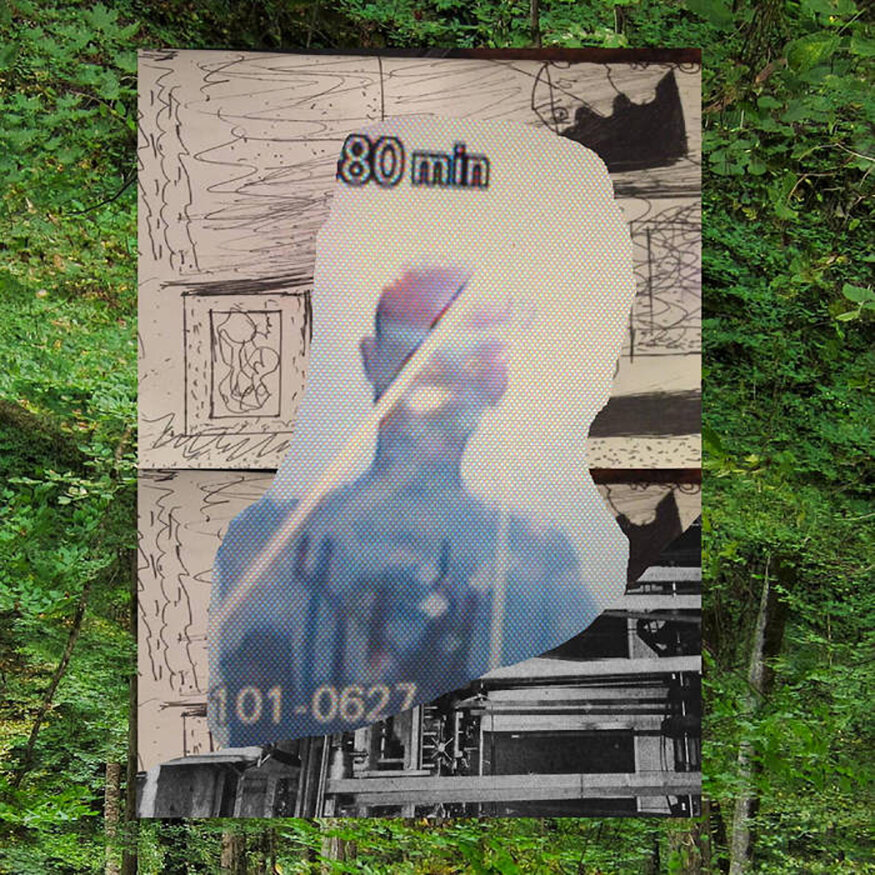Subterranea & Geothoughtmaps
October 23, 2020
Mt. Borracho
Mt. Borracho is a San Antonio-based underground audio-visual Techno project founded in 2013 by Cameron Day and Zachary Smith. The duo approaches each album as an installation for galleries rather than traditional listening. Using electro-acoustic hardware, they invoke dark drone sounds, personal surrealism, and the paranormal in their live DJ sets. The project looks toward the 2020s, developing varied abstract music for subterranean and fine art settings.
Mt. Borracho views each recording as a metaphysical experience. We approach our albums as symphonies and classical movements with sounds organized into themes rather than tracks. We leave our soundscapes unstructured, decentralizing their order and blending each recording with electronic rhythms. For our electro-acoustic sets, we scour for field recordings and music samples and pitch them down, blending them with electronic modular effects like texture synthesizers, resonators, reverb, and delay.
We build drone sounds by elongating, looping, and slowing down low, dispersive frequency oscillations, often creating dark, harrowing textures. Drone sounds remind us of the convergent point between two deep and murky oceans — one composed of digital binary data, and one filled with whale sonar. Most sources are purposeful, like resampling our own wav. files from previous recordings, while others are purely coincidental, like strange voice mail interceptions from creepy, random people in Kansas. Sometimes we experiment around with outdated equipment and off-forum software. One example is a 1990s image synth software called Coagula that reads pixels in a user-generated bitmap graphic to create music. We also like to experiment with old cassette tape loops because these devices create granular artifacts that are impossible to emulate with professional gear.
Our interest in source manipulation doesn’t end with audio. We also use data-interpretation and conversion in our visual art to make abstract digital pieces, breaking down image data by over-processing, repeat sampling, and exporting raw file formats. For the audiovisual gallery exhibition for our album, Project Bouncy Castle, we compiled four years of footage from Chicago, Colorado, Japan, and Alpine Switzerland and manipulated each source through multiple channels, displaying them thirty different ways around us.
Drone sounds remind us of the convergent point between two deep and murky oceans — one composed of digital binary data, and one filled with whale sonar.
In a traditional techno abyss in Berlin or the 313, noise sets are known to last longer than six hours. Here in Austin and San Antonio, sets tend to be much shorter, less than two hours, because venues are required by Texas law to close at 2 A.M. So we face an interesting creative challenge of “zoning out” our audiences much sooner, sometimes as soon as fifteen minutes. This means we need to build complex technological music and reconsider our performance strategies if our drones are to work. In contrast with traditional commercial shows, we open and close each performance informally and play as chaotic and non-sequential as possible.
Solidifying the role of Mt. Borracho in the musical ecology of a city like San Antonio is alluring, where traditional attitudes create the perfect underbelly for a project of this sort. Unlike the rugged, grimy atmosphere of a venue like Asile 404 in Marsaille, where audience members compliment our performances as involved and complex, the ethos of venues in San Antonio tend to contrast heavily with our minimalist, ambient approach. One time at a German-heritage cultural institution, we played with only a $20 Moog synthesizer app and a cheap 909 bass drum emulator. People did not like this. One person offered us five dollars to stop playing, and another disconnected our left PA speaker, causing a nasty feedback loop on stage.
By exploring the themes of looping and incremental change, we hope to capture the feelings of human curiosity, particularly for things more threatening, like technology or the paranormal. What we love most about darker recordings are the emotions they evoke, the eerie, archaic feelings meshed into the digital soundscape. We want more people to title their albums cryptically and elicit darker responses. These emotions are lost in contemporary commercial music, so clean and plastic and boring, compared to acts undercut with harsh and creepy sounds that force the listener to challenge conventional listening patterns.
We want music that requires introspection and self-reflection — music that, when combined with dance, transcends the multi-sensory experience. We want to challenge the listener’s sense of self and time. Dancing in itself is like looping, both of which are some of the most basic forms of human expression. We try to encourage this marriage when we perform. One of our earliest tracks, “Geothoughtmap,” utilizes rapid dynamic textural changes to elicit non-hierarchical entrance and exit points for the listener. An audience can get lost in this mental space — each person developing open-ended, organic memories that can be revisited and reconsidered later.
The main goal of Mt. Borracho is to make our dark, abstract style more popular, even venturing into commercial environments. We hope to see more than just a tight-knit community attending techno and noise events. Smaller cities like San Antonio could be the next Berlin, Detroit, or New York, and we could all benefit from playing at more prestigious institutions. Despite Covid-19, the DIY scene will only grow from here.





